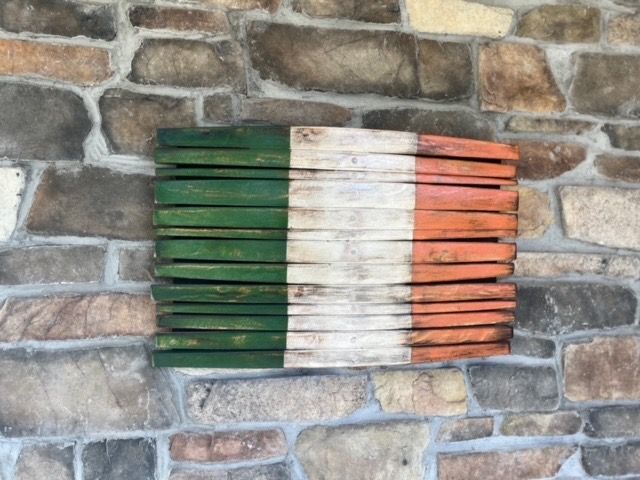The seisiún may not be as egalitarian as it appears.
Traditional Music / By Daniel Neely
Last week I was reading an interesting and reasonably recent book about Irish music sessions that I thought I’d share called “Rites of Spontaneity: Communality and Subjectivity in Traditional Irish Music Sessions” by Augusto Ferraiuolo. In it, Ferraiuolo, a bodhrán and concertina player who teaches anthropology at Boston University, has brought a heavily academic perspective to bear on one of Irish music’s most beloved institutions.
With Irish traditional music being a fairly expansive subject, Ferraiuolo narrows his focus early on, advising his readers that “[this is] not a book on traditional Irish music. Instead, it is about a specific performative setting called the ‘session,’ (Gaelic transliteration: seisiún) where traditional Irish music is played” (p.2).
He recognizes the complexity of the space and argues that the “informality of a session at first suggests a sort of egalitarian space and relationship. However, if analyzed closely the sessions appear to be clearly hierarchical, with an evident manifestation of power-relationships between players and audiences” (p.3). This notion becomes central to his work and is the jumping off point for much of his subsequent analysis, especially towards the end of his book where he focuses more heavily on understanding how “community” works with respect to music making.
In collecting material for this book, Ferraiuolo describes a fieldwork-based methodology that drew primarily on three types of sources: one-on-one interviews, observations made as a participant, and data collected in electronic spaces, including “various blogs, mailing lists, and discussions on the web” (p.5). Players of traditional music will likely recognize many of the individuals and resources referenced.
The book itself is divided into five chapters. Chapter one, “The Haunted House: Genealogy of Sessions” uses the work of a variety of critical and social theorists to define the session as a “space” and offers a look at how moments of impromptu music making have figured into Irish music making over time. Chapter two, “Boys of the Town: Phenomenology of Sessions” looks at questions of “how,” by exploring the relationships and extra-musical elements that influence the experience of a session. (Here, I’m reminded of Christopher Small’s writing about the concept of “musicking.”)
Chapter three, “Last Night’s Fun:: Craic, Communality, and Practice,” is a closer look at the range of interpersonal dynamics at play in sessions. Prefacing this chapter with a look at the etymology of the word “crack,” he goes into an in-depth analysis of the small talk around music, tune genealogy, and transmission. He then weaves field experiences and interviews together with discussion posts from thesession.org to tease out ideas about the web of interpersonal dynamics that inform the concept of “communality.”
Chapter four, “Swinging on the Gate: Heterophony and the Asymmetry of Game” looks at “the dimension of heterophony and how subjectivity is encoded in traditional Irish music and, vice versa, how encoded traditional Irish music shapes subjectivity through the performance of a session.” Here, Ferraiuolo address continuity and change in a way that reminds me of how Amiri Baraka used the notion of “the changing same” to describe jazz music.
In chapter five, “The Boys of Ballisodare: Subjectivity and Communality in the Traditional Irish Music Session,” Ferraiuolo explores the concept of the individual as a way of thinking about how communities define themselves. In his analysis, musical heterophony is a concept that can also be considered an expression of strategically defined community, and, through music, a particular take on the construction of “Irishness.”
This is not a casual book about traditional music and isn’t for everyone. Ferraiuolo writes with an academic sensibility, and in weaving his narrative he invokes myriad theoretical issues and the work of a variety of theoreticians in ways that mightn’t interest lay readers. For example, many will find things he chose to analyze obvious, while others might find the way he describes things unnecessarily obtuse. While neither of these criticisms is necessarily wrong, neither is particularly valid, given what Ferraiuolo’s trying to do.
Rather, this book is wide ranging and as a work of anthropology it has a lot going on. He does two things particularly well, I think. First, through a thorough literature review and several interviews, the author documents what sessions “are,” in both historical perspective and contemporary practice. Attention is paid to music making in different time periods and geographic locations which illustrate the different ways session playing happens.
Second, he provides some nice ethnographic moments about music making in Boston. Accounts such as these are important for understanding a given moment in the life of a music (or its constituent community) and allows others to read through the research, to ask new questions and to pinpoint the recognizable elements that sessions – regardless of location – share. Finding the right balance in this respect can be challenging, but Ferraiuolo has found a path that works for him.
Again, “Rites of Spontaneity: Communality and Subjectivity in Traditional Irish Music Sessions” is not a book for everyone. However, readers interested in a deep philosophical dive into the meaning of traditional music sessions will find this an interesting text. To learn more, visit cambridgescholars.com/rites-of-spontaneity.










